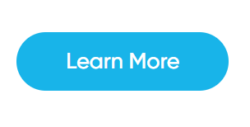Paul Applegate, VP of Alliances and Business Development recently collaborated with ASUG, Americans SAP Users Group, to discuss the continued impact of the 2020 global pandemic to utility providers. Below details the highlights of this collaboration and the full partner insight can be found here.
The ripple effects of the 2020 global pandemic continue to impact various sectors, with utility providers facing one of the costliest aftereffects: billions of dollars in unpaid bills that jeopardize their operational stability. According to the National Energy Assistance Directors Association (NEADA), delinquent utility payments have surged to over $20 billion in the U.S. as of last September, reflecting a 36.6% increase since January 2022.
Amidst these challenges, utility customers’ engagement expectations continue to evolve. Utility customers expect the interactions with their utilities to be as seamless as those offered by companies like Amazon and Uber.
To tackle the massive arrearage challenge, utilities must be able to do things simultaneously. First, they must be able to meet their customers when and how they want to engage. Second, and arguably most important, they must be able to leverage these engagement touchpoints to drive behavioral change. If they can do both things well, utilities can affect the type of change needed to move more of their customers to become digitally engaged.
This shift in mindset necessitates corresponding changes in operational efficiency. Each unnecessary manual process acts as an organizational tax, hindering utilities from supporting their most vulnerable customers. Time spent handling avoidable phone calls, processing paper checks, or managing other manual workflows represents a significant opportunity cost for organizations already operating with constrained resources.
The employee burden tax of these manual processes has hit areas of rapid growth the hardest. U.S. Census data reveals an important demographic trend: urban centers are losing population as Americans increasingly relocate to rural areas and suburban neighborhoods, particularly in the Southeast and parts of the Mountain West.
Utilities in these rapidly growing regions face service territories with significantly more customers and new construction, all without corresponding staffing increases. This forces them to maintain service quality with fewer employees per customer, especially in areas experiencing the most significant population gains.
These challenges have created a perfect storm, demanding solutions that address both sides of the equation: helping utilities recover revenue while delivering the intuitive experience modern customers expect.
Understanding and Addressing Non-Payment
Research identifies two main groups of non-payers: those who forget to pay amid life’s chaos and those struggling financially. When utilities fail to segment these causes, they waste resources on one-size-fits-all approaches. A key to success is ensuring that all customers have access to a CX platform that provides an experience that is easy to use and drives users to do things like sign-up for AutoPay, enroll in pay-by-text and opt-out of paper billing in all check-out routes. When utilities reduce late payments from those with the means to pay they are able to dedicate more resources to vulnerable customers.
Collections succeed with strategies tailored to distinct customer segments. For example, traditional paper bills are prone to check fraud, which has surged 385% in the last five years, and often get lost in mail piles. Limited internet access also blocks timely payments for over 14 million American households, especially in unbanked and non-English speaking communities. However, about 97% of Americans own mobile phones, offering an alternative digital channel for reaching disconnected customers.
Building an Inclusive Payment Infrastructure
A proactive, omnichannel approach makes it easier for customers to pay at every touchpoint and drives behavioral change for higher digital payment adoption. Personalized communications that mention specific areas and respect preferred contact methods build trust and outperform generic notices.
An intelligent billing and payment platform enables utilities to:
- Send multiple branded reminders: Customers are more likely to pay after receiving second or third notifications.
- Leverage personalized Outbound Campaigns: Targeted messaging via email, phone, or text helps reach unresponsive customers.
- Provide omnichannel payment access: From mobile wallets to IVR phone payments, customers can pay through their preferred channel.
While some customers forget to pay, others struggle financially. Early information about assistance programs is crucial for those in serious financial difficulty, preventing temporary payment issues from escalating to service disconnection.
Utilities should offer flexible options, including:
- Payment plans and installment options: Solutions like PayPal’s “Pay in 4” allow customers to break payments into manageable amounts.
- Assistance program outreach: Proactive communication about financial assistance programs can help those in need before they fall too far behind.
- Cash payment options at local retailers: Ensuring accessibility for unbanked or underbanked customers helps prevent service shutoffs.
Digital Payments for Everyone with InvoiceCloud and SAP
Progress demands an inclusive payment infrastructure that works equally well for tech novices and experts, accommodates various financial situations, and respects payment preferences. Customer satisfaction improves when frustrating payment processes are replaced with convenient options tailored to individual needs.
As demographic shifts and staffing limitations challenge utilities, modernized payment systems offer a critical advantage by allowing companies to accomplish more with existing resources while delivering improved customer experiences.
The integration between InvoiceCloud and SAP S/4HANA Utilities enables better segmentation of non-payment causes by connecting payment data directly with customer information already stored in SAP systems, allowing utilities to apply appropriate collection strategies based on customer history and payment patterns.
By integrating these solutions, utilities can reduce collections burdens, improve cash flow, and dedicate more time to assisting customers who need it most. InvoiceCloud’s innovative platform makes it easy to encourage payments, offer flexibility, and transition more customers to digital billing.

